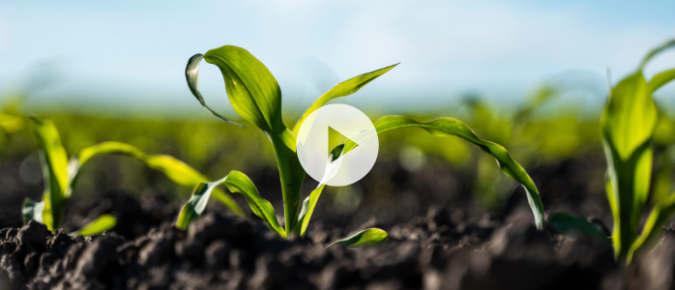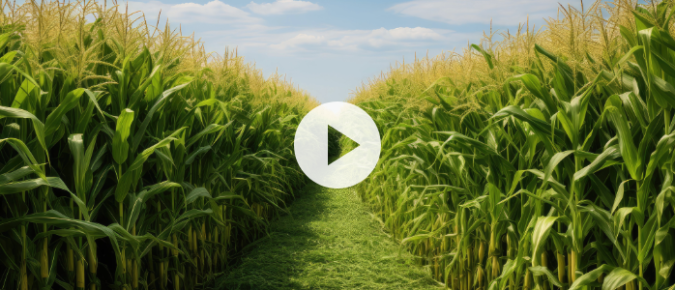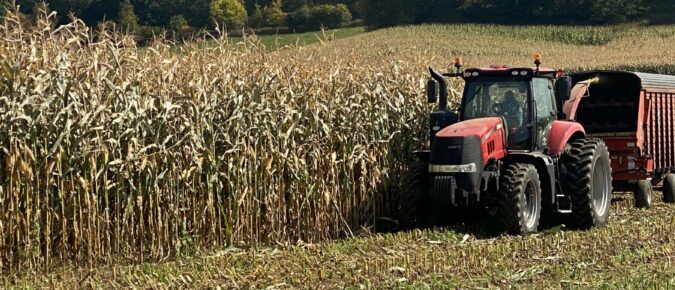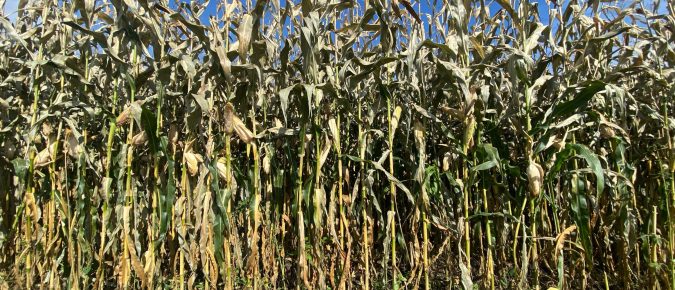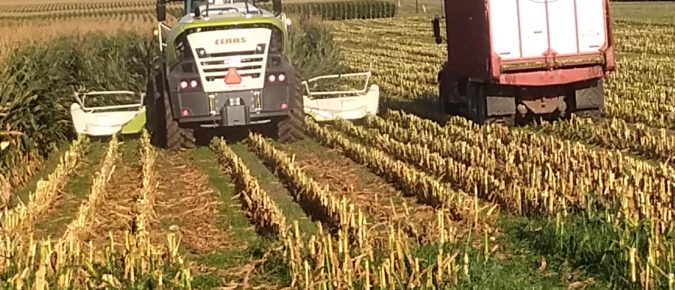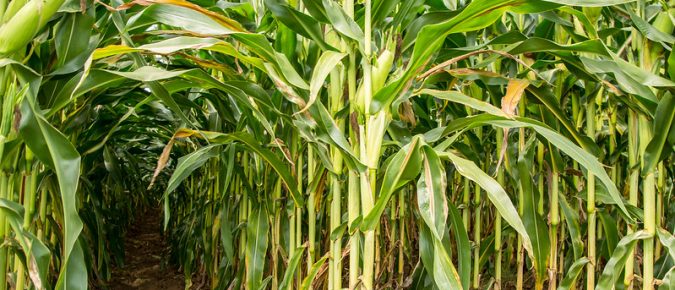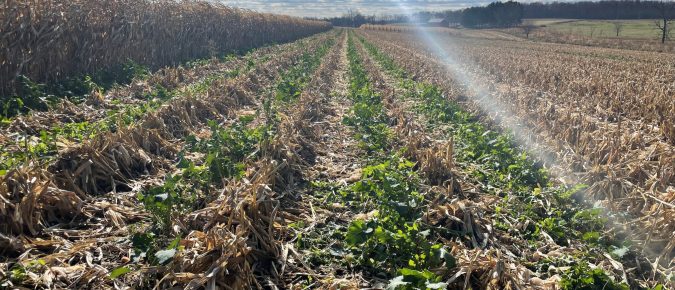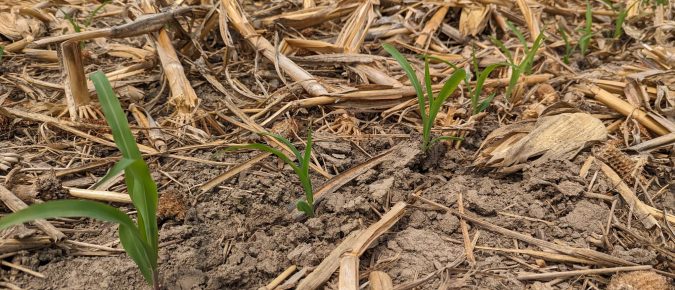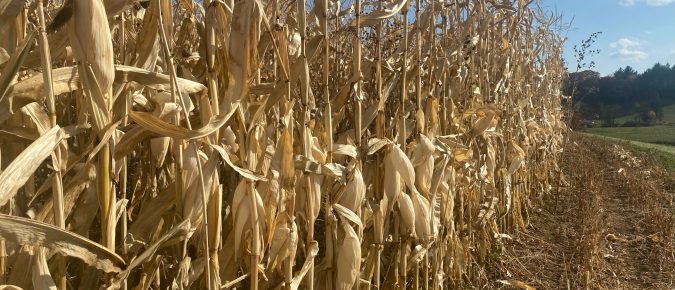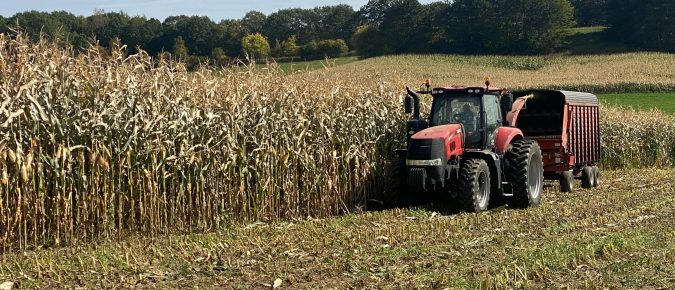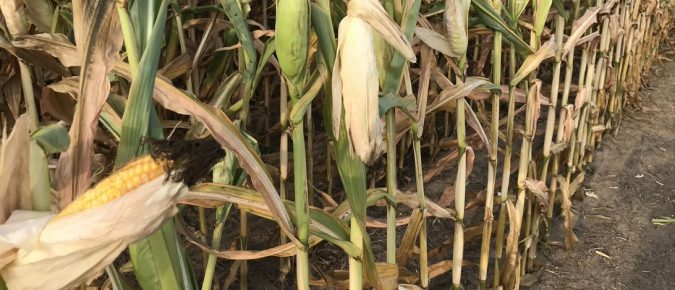In the September 11, 2024 Badger Crop Connect webinar, Dr. Harkirat Kaur, a new extension specialist at UW–Madison, introduced herself and shared her background, education, and research experiences.
In the September 11, 2024 Badger Crop Connect webinar, Kevin Jarek discussed the challenges faced in corn silage and dry down this year.
We’re starting to see some foliar diseases come into corn in WI, which may affect harvest timing and management. We’re not overly concerned; however, the time is right to be proactive and scout, scout, scout!
The August 14 Badger Crop Connect webinar featured Dr. John Goeser, Animal Nutrition Lead for Rock River Lab; Consultant for Cows Agree Consulting; and adjunct assistant professor in the UW–Madison Department of Animal & Dairy Sciences. Dr. Goeser reflects on the corn silage growing season to this point and offers late season and harvest management options.
The August 23rd Badger Crop Connect session features discussions by two speakers. The first is Dr. Joe Lauer, Corn Agronomist, UW-Madison Professor and Extension Specialist. Joe Lauer shares timing, drydown, other corn silage related advice, and research results. The second speaker is Dr. Brian Luck, Biological Systems Engineer, UW-Madison Associate Professor, and Extension Specialist. Brian Luck shares information on silage harvest machinery setup, real time evaluation of kernel processing, and other potential technology to implement on a chopper.
Beef cow-calf producers are feeling the pinch of low pasture and hay yields due to drought conditions across the state. Corn silage is another feed source that can be used to help meet the herd’s nutritional needs.
Corn silage is unique compared to other multicut forage systems, such as alfalfa, as there is only one opportunity to harvest the crop annually. Therefore, farmers, agronomists, and agricultural professionals must dilligently monitor corn silage acres to identify the optimal harvest time to maximize forage yield and quality, as well as to ensure the proper moisture content for ensiling.
Whether it’s reducing nitrates leached to groundwater, phosphorus to our water bodies or increasing soil organic matter and microbial biomass, the answer is generally yes. But in trying to integrate cover crops into a cropping system, what are the considerations–species selection, seeding, benefits and drawbacks–that need to be addressed along the way?
While the early part of the year was characterized by large amounts of precipitation, the May Wisconsin experienced this year was the 4th driest on record. While some areas are receiving scattered amounts of precipitation this week, the speed with which the drought came on and led to the designation of “flash drought” for much of the state led UW-Madison State Climatologist Steve Vavrus to call this time “remarkable.”
The first Focus on Forage session of 2023, Focus on Corn Silage, features Dr. Joe Lauer, UW Corn Agronomist, Dr. Damon Smith, UW Plant Pathology, and Kevin Jarek, UW-Madison, Division of Extension Crops/Soils Educator.
There continues to be a lot of interest in corn silage harvested with a self-propelled forage harvester (SPFH) equipped with an aftermarket processor having cross-grooved processing rolls set for 2- to 3-mm roll gap and greater roll speed differential than has typically been used (32% versus 21%). Also, the developer of this processor recommends that […]
The plant density that maximizes corn grain and silage yield has been increasing through time. The economic optimum plant density is a function of corn yield and quality responses, seed cost, and grain or silage price. The economic plant density is lower than the plant density that maximizes yield.

